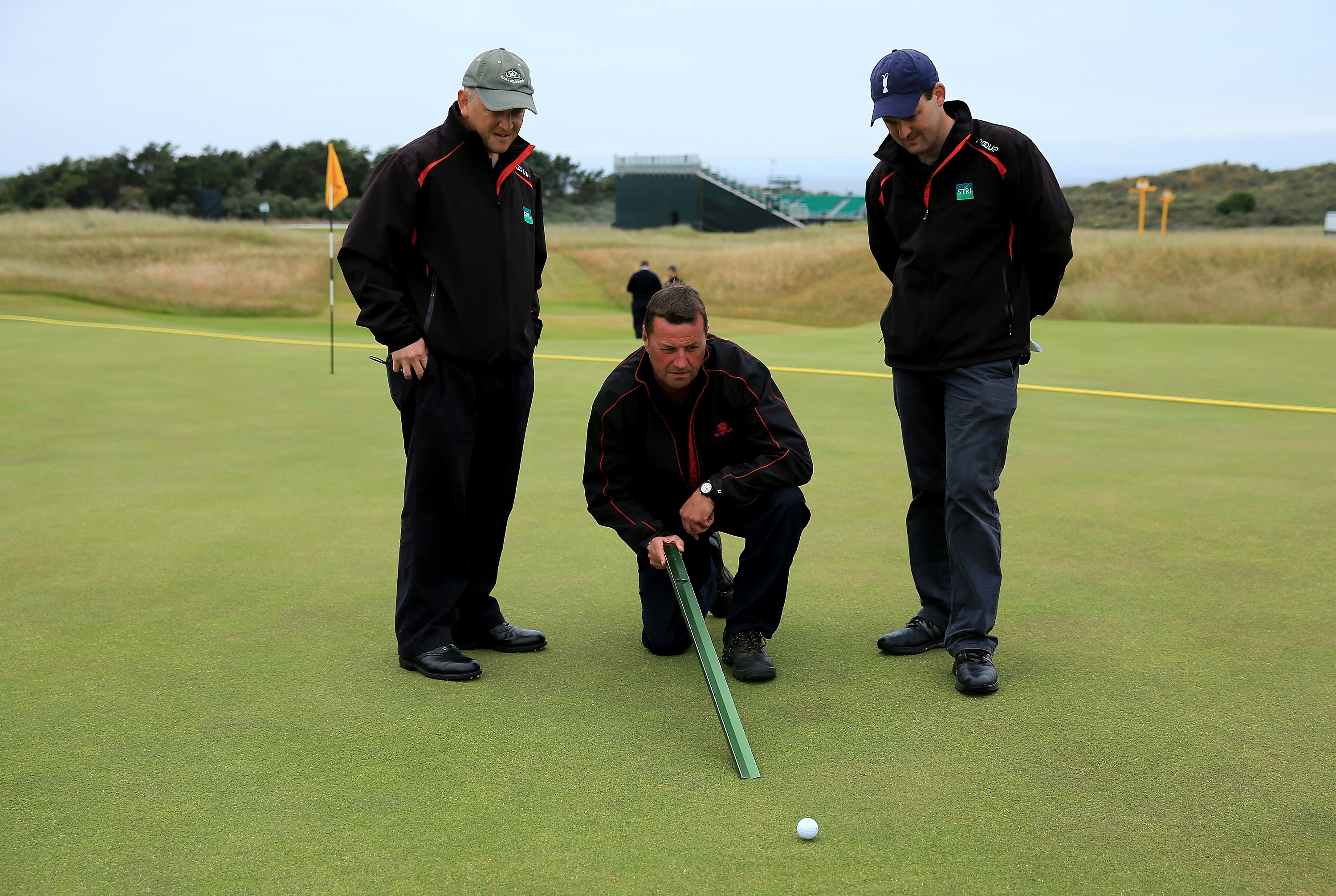
It’s rare for this device not to get a mention during television coverage of the golf, especially when the topic is the speed of the greens.
The stimpmeter, which is often shortened to ‘stimp’, is a crucial tool for greenkeepers and course managers. It’s a device that is used to measure the speed of greens, hence why we hear it mentioned a lot when players are lining up putts, especially at Augusta National, where the surfaces are famous for being very quick.
How does a stimpmeter work?
The stimpmeter measures 36 inches (91cm) in length and has a V-shaped chute down which a golf ball can roll. It is designed with two notches in it on which can rest a ball. One of these notches is 30 inches from the tapered end that rests on the ground, and the other is 14 inches from the end.
To measure the speed of the greens, a flat area will be selected. A golf ball is placed on the notch which is 30 inches from the end – also known as the 1X notch – and that end of the stimpmeter is lifted slowly, with the other end still resting on the green, until the ball rolls down the chute and across the green.
A measurement is then taken from the end of the stimpmeter to the ball’s finishing position. This process is repeated three times and, so long as each reading is within eight inches of one another, the average of these three becomes one of the two measurements that will be used.

Then the process is repeated but with the start point now being the average point of where the three balls finished and the chute is pointed to roll the ball back in the exact opposite direction to the three previous rolls. This means that any slight slopes, or the effect of the grain, will be balanced out.
If the three readings are not within eight inches of each other, the process must be repeated. If the trio still fail to accord with one another, it may be that that section of the green has too much slope.
There will be times when it’s not possible to find a suitable area of flat green, in which case it might be necessary to use the other notch, 14 inches up the stimpmeter – the 2X position – so that the ball doesn’t roll as far. In this case, when you have determined the average of the three rolls, this average is then doubled.
The average roll going in one direction is then added to the average roll in the opposite direction; the total is then divided by two. We now have our final figure, which is measured in feet. This is the stimpmeter reading, or ‘stimp reading’.
Why is it called a Stimpmeter?
The device takes its name from its inventor, Edward S. Stimpson. In the 1930s, Stimpson created a wooden version which was, in effect, simply a chute for which a ball to roll down. Modern stimpmeters are made of aluminium.
What is an average stimpmeter reading?
Greenkeepers and course managers will aim to have greens running at a consistent speed across the entire course. If the greens at your golf club are running at around nine or 10, that would be considered average. Of course, this number might increase for the Club Championships or at certain times of the year when faster greens are more desirable because of the challenge they pose.
What is a fast stimpmeter reading?

Tour professionals are more used to putting on surfaces where the stimpmeter readings reach around 13 – and sometimes higher. There is a limit to how fast course managers will want the greens to play. Imagine an exposed links course on a windy day. In conditions like this, you could see the balls moving on the green – and play would most likely have to be suspended.







